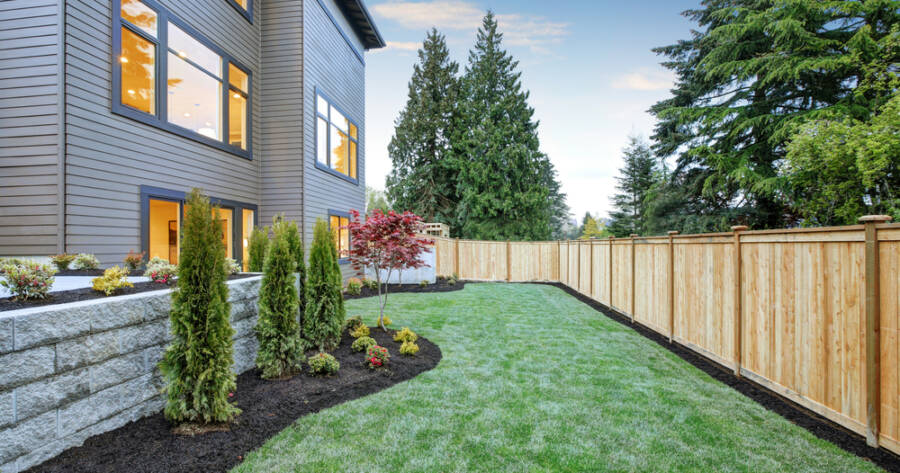Imagine stepping out into your backyard, away from the stresses of everyday life, and into a personal sanctuary of peace and beauty. Transforming outdoor spaces into tranquil retreats can offer a soothing escape where nature and design harmoniously intertwine. Crafting such spaces involves creativity, thoughtful planning, and a keen understanding of how to best utilize available resources.
Understanding Your Space
Before diving into landscaping, assessing your backyard’s unique characteristics is essential. Observing the sunlight patterns, soil conditions, and existing vegetation is crucial as these factors influence the types of plants that may thrive.
Considering potential challenges like shade or drainage issues could guide more strategic planning. Smaller spaces might benefit from vertical gardens or multi-level layouts, while more expansive yards might allow for distinct zones tailored to various purposes.
Incorporating Natural Elements
Integrating natural elements such as stone, wood, and water can add an organic touch to outdoor spaces. Stones could be used for pathways or walls, providing structure while retaining a natural aesthetic.
Wooden structures like pergolas or decks offer warmth and a tactile connection to nature. Introducing water features like fountains or small ponds might enhance the soothing ambiance through the gentle sound of flowing water, providing an oasis-like feel.
Plant Selection and Garden Design
Choosing the right plants involves understanding the interplay of color, texture, and seasonality. Opting for a mix of perennials and annuals could ensure season-long interest and vibrancy.
Native plants might be especially beneficial, as they usually require less maintenance and are more resilient to local climates. Grouping plants by their water needs might help in creating efficient irrigation zones, fostering sustainability and reducing water usage.
Creating Comfortable Outdoor Spaces
Designing areas for relaxation can make a backyard more inviting. Thoughtfully placed furniture, such as loungers or hammocks, can provide comfortable seating.
Cushions and throws might add softness and warmth, making these spaces more appealing for lounging. Incorporating shade through umbrellas or tree canopies could offer respite during hotter months, encouraging longer use of outdoor areas.
Establishing Privacy
Privacy contributes significantly to the feeling of a secluded retreat. Strategically placed hedges, fences, or trellises might create an intimate environment.
Fast-growing plants or bamboo could offer natural screening, while climbers on trellises could add both beauty and seclusion. Balancing openness with privacy involves aligning design choices with personal preferences and the setting’s context.
Enhancing Mood with Lighting
Effective lighting design may transform a garden’s night-time ambiance. Soft, warm lights might evoke a cozy atmosphere, while strategically placed solar lights could highlight pathways or garden features.
Fairy lights are often used to evoke a magical feel, creating an enchanting nighttime retreat. By combining different lighting techniques, such as uplighting trees or spotlighting water features, the garden can blend safety with style.
Encouraging Wildlife
Attracting birds, butterflies, and beneficial insects could enliven a garden and promote biodiversity. Native plants often provide natural food sources, while bird feeders or birdbaths might further invite wildlife.
Consider pairing these with strategies that support pollinators, like planting wildflowers or creating small habitats with logs and rocks. This careful ecological attention can contribute positively to local ecosystems.
Focusing on Sustainability
Adopting sustainable practices might not only reduce environmental impact but also enhance the garden’s resilience. Practices like composting reduce waste and enrich soil.
Opting for drought-tolerant plants could lower water usage, and using recycled materials in furniture or décor helps minimize the carbon footprint. A sustainable approach fosters harmony with nature, potentially adding depth and meaning to the landscaping effort.
Learn More Today!
Designing a tranquil backyard retreat involves marrying nature with thoughtful design elements to create an oasis of peace and beauty. While individual preferences and site conditions will guide many decisions, integrating elements like natural materials, strategic plantings, and wildlife-friendly features can lead to a more rejuvenating and personalized space. Whether small or expansive, with careful planning and creativity, it’s possible to transform any backyard into a serene sanctuary that nurtures the soul.

